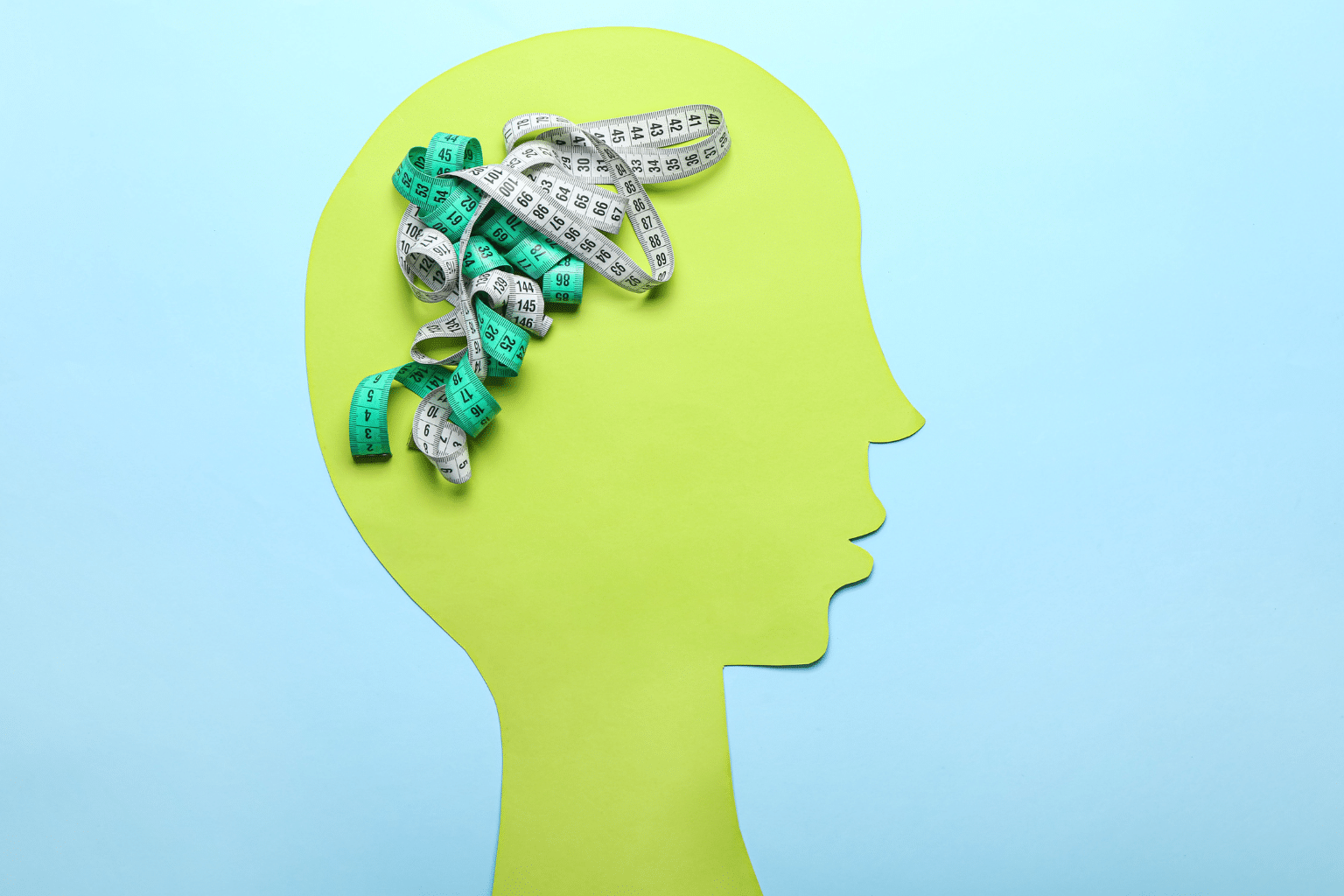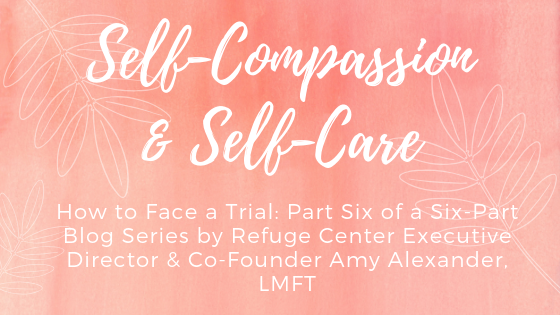As therapists, and as responsible friends and family, we need to be responsible about our “food language” and how we engage with individuals who are diagnosed with eating disorders. I will discuss Bulimia Nervosa (BN) primarily, which is one of the top three most common eating disorders along with Anorexia Nervosa and Binge Eating Disorder. If you want to learn more about these disorders, and how you can advocate for individuals with them, I encourage you to visit the National Eating Disorders (NED) Website to learn more. The National Eating Disorder Association states, “At any given point in time, 1.0% of young women and 0.1% of young men will meet diagnostic criteria for bulimia nervosa.” This data is drawn from the UK, US and Europe. The combined population of these regions is 1,136,250,000 individuals, which means that 11,362,500 young women and 1,136,250 young men could have Bulimia Nervosa at some point during their lives. Every individual with whom we, as therapists work with, has a unique relationship with food, whether healthy or unhealthy.
OVERVIEW
Individuals diagnosed with Bulimia Nervosa binge on large quantities of food and then purge or perform compensatory behaviors to rid themselves of the extra calories (Mayo Clinic, 2017). The DSM-5’s diagnostic criteria for the disorder include “eating large amounts of food in a discrete amount of time,” a “sense of lack of control over eating during an episode” and purging (2013). It must occur, on average, at least once a week for 3 months typically to be formally diagnosed. Individuals with BN have been known to eat up to 20,000 calories at a time (Harvard Health, 2014). Purging bulimia means self-induced vomiting, whereas non-purging bulimia involves excessive exercise, dieting, laxatives, suppositories, enemas or fasting. Frequency of binging can range from several times a week to several times a day (Harvard Health, 2014). Binge eating and purging leads to a lot of emotional and physical strain. The individual might experiencean immediate relief of tension, but will most likely feel extremely guilty, depressed or fearful of discovery afterwards (Comer, 2015, 11.2). Vomiting only expels half of the calories consumed in one sitting, so an unhealthy number of calories are retained.The group most likely to be affected by BN is females. Eighty-five to 90% of those with BN are female(Harvard Health, 2014). BN usually develops in the late teens or early adulthood between 15 and 20 years of age (Comer, 2015, 11.2).
MYTH #1
Everyone who has an eating disorder is skinny or looks sickly. Individuals with BN are often at a normal weight or even overweight (Ouellette, 2015). Consistent purging can also lead to dehydration, kidney failure, heart irregularities, tooth decay, gum disease, digestive problems or suicide (Mayo Clinic, 2017). Self-harm is a common comorbid condition that affects 34% ofindividuals with BN. In addition, individuals with BN have an increased risk of suicide, which is a frequent cause of death (Ouellette, 2015).
CAUSES
Many factors could play a role in BN’s development such as societal pressure, low self-esteem, biological abnormalities or poor emotional health. A few leading symptoms of this disorder areextreme concern or dissatisfaction with body weight or image, self-criticism, or high levels of anxiety or depression.
MYTH #2
Eating disorders are triggered simply from external factors like nagging parents, peer pressure, or societal dieting trends.
While these factors can impact an individual, research suggests that biology plays a key role in triggering these unhealthy responses to food (Weir, 2016). One study even stated that women with BN have an “altered intrinsic brain architecture,” which suggests that it is a large-scale problem extending to multiple regions of the brain (Wang et al., 2017, 414).
MYTH #3
Individuals with BN are young, white, privileged women.
In reality, lifetime prevalence for BN is higher in Latinx and African-American populations (Marques et al., 2010, 412).
TREATMENT
Numerous forms of treatment are available for individuals with BN. Nutritional counseling and Psychotherapy are highly recommended. Medication has also been known to reduce the binge eating and purges in some cases, but it is advised that some form of psychotherapy accompany medication for betterresults (Mayo Clinic, 2017). Individuals with BN should regularly receive maintenance treatment even after they have avoided binge eating or purging for longer than three months to prevent relapse.
OUR RESPONSIBILITY
Weissman et. al (2016), discussed “Terms that should be avoided in the eating disorder field.” As clinicians, the following list should be considered:
● Avoid using “bulimic” or “anorexic” as adjectives. Use person-first language!
● Replace “bulimic episode” or “binging” with “binge-eating episode.”
● Avoid using abbreviated forms of the disorder such as “anorexia.” Instead use, “Anorexia Nervosa”
● Reconsider saying that an individual “suffers from” or “struggles with” BN. Reframe by saying, “An individual diagnosed with BN.”
Let’s be aware of and reframe the phrases listed below. The following phrases are easy to utter in our homes and seem harmless, but what we say behind closed doors often tends to creep into our day-to-day speech, and consequently could be heard by someone who has an eating disorder.
● “I’m having seconds…don’t judge me.”
○ This phrase demonizes the idea of wanting or being hungry for more food! Personally, as someone who has a high metabolism, I am quick to jump up for seconds or thirds! Instead say, “I’m having seconds, does anyone want anything while I am up?”
● “You’re so skinny, you can eat whatever you want.”
○ For anyone who has an eating disorder, this phrase could be triggering, and in general, this often is untrue. Skinny does not equal healthy and should not be glorified.
● “It’s fine, we’ll work it off in the gym tomorrow”
○ This phrase insinuates that weight gain or loss is directly tied to exercise. Living a healthy lifestyle involves so much more than exercise and food. Mental health, hormone levels, underlying illness and stress levels are just a few examples of factors that can influence ourphysical and overall health. We can talk about moderation, but let’s not oversimplify it.
● “Ugh…I can’t believe I ate that much. I feel fat.”
○ We can respond to these comments by saying, “You look just as great to me!” I will be the first to admit that I have said this phrase many times, and in all honesty, I have either said it as a joke, or as a quick way to boost my confidence in hopes for a compliment. I often do not consider how it makes the people around me feel. Does this phrase make them feel ashamed about their body? Let’s ask this question before we say something like this.
We should not avoid conversations about food or dietary health, but we need to be conscious about the people around us! The Refuge Center is a wonderful place that can welcome you with open arms if you are struggling with an eating disorder of any kind. We can connect you with one of our trained therapist that can support you through your own expectations. To schedule an intake appointment, call 615-591-5262 or email [email protected]. To see what sort of services we provide, head to refugecenter.org/services
REFERENCES
American Psychiatric Association. (2013). Diagnostic and statistical manual of mental disorders (5th ed.). Arlington, VA: American Psychiatric Publishing.
Bauer, S. (2010). Music therapy and eating disorders-A single case study about the sound of human needs. Voices, 10(2).
Bibb, J., Castle, D., & Mcferran, K. S. (2019). Reducing anxiety through music therapy at an outpatient eating disorder recovery service. Journal of Creativity in Mental Health, 1–9 doi: 10.1080/15401383.2019.1595804
Bibb, J., Castle, D., & Newton, R. (2016). ‘Circuit breaking’ the anxiety: Experiences of group musictherapy during supported post-meal time for adults with Anorexia Nervosa. Australian Journal of Music Therapy, 27, 1-11.
Collins, B., McDowell, J. E., Miller, S., Breithaupt, L., Thompson, J., & Fischer, S. (2017). The impact of acute stress on the neural processing of food cues in Bulimia Nervosa: Replication in two samples. Journal of Abnormal Psychology, 126(5), 540-551. doi:10.1037/abn0000242.supp
Comer, Ronald. (2015). Abnormal psychology. New York, New York: Worth Publishers.
Cyr, M., Yang, X., Horga, G., & Marsh, R. (2018). Abnormal fronto-striatal activation as a marker of threshold and subthreshold Bulimia Nervosa. Human Brain Mapping, 39(4), 1796-1804. doi:10.1002/hbm.23955
Fabello, M. A. (2017, December 23). 7 Food-Related Phrases You Should Ban From Your Vocabulary This Month (and Forever). Retrieved from
https://www.self.com/story/food-related-phrases-to-stop-using
Harvard Health Publishing. (2014, December). Bulimia: Symptoms, diagnosis and treatments. Retrieved April 14, 2018, from
https://www.health.harvard.edu/mind-and-mood/bulimia-symptoms-diagnosis-and-treatment s
Lejonclou, A., & Trondalen, G. (2009). “I’ve started to move into my own body”: Music therapy with womensuffering from eating disorders. Nordic Journal of Music Therapy, 18(1), 79-92.
Marques, L., Alegria, M., Becker, A. E., Chen, C., Fang, A., Chosak, A., & Diniz, J. B. (2010). Comparative prevalence, correlates of impairment, and service utilization for eating disorders across US ethnic groups:Implications for reducing ethnic disparities in health care access for eating disorders. International Journal of Eating Disorders, 44(5), 412-420. doi:10.1002/eat.20787
Mathisen, T. F., Rosenvinge, J. H., Friborg, O., Pettersen, G., Stensrud, T., Hansen, B. H., & Sundgot‐Borgen, J. (2018). Body composition and physical fitness in women with bulimia nervosa or binge‐eating disorder. International Journal of Eating Disorders, 51(4), 331-342. doi:10.1002/eat.22841
Mayo Clinic. (2017, August 23). Bulimia Nervosa. Retrieved April 14, 2018, from https://www.mayoclinic.org/diseases-conditions/bulimia/symptoms-causes/syc-20353615
Ouellette, J. (2015, January). Statistics on Bulimia. Retrieved from https://mirror-mirror.org/facts-staticstics/statistics-on-bulimia
Siegel, S. (2007). Music therapy practice for clients with eating disorders. In C. Colwell & B. Crowe (Eds.), Effective clinical practice in music therapy: Music therapy for children, adolescents, and adults with mental disorders (pp. 165-174). Silver Spring,
MD: American Music Therapy Association, Inc. Statistics & Research on Eating Disorders. (2020, May 08). Retrieved from
Valenzuela, F., Lock, J., Grange, D. L., & Bohon, C. (2018). Comorbid depressive symptoms and self-esteem improve after either cognitive-behavioral therapy or family-based treatment for adolescent Bulimia Nervosa. European Eating Disorders Review. doi:10.1002/erv.2582
Wang, L., Kong, Q., Li, K., Li, X., Zeng, Y., Chen, C., . . . Si, T. (2017). Altered intrinsic functional brainarchitecture in female patients with bulimia nervosa. Journal of Psychiatry & Neuroscience,42(6), 414-423. doi:10.1503/jpn.160183’
Weir, K. (2016, April). New Insights on Eating Disorders. Retrieved from https://www.apa.org/monitor/2016/04/eating-disorders
Weissman, R. S., Becker, A. E., Bulik, C. M., Frank, G. K., Klump, K. L., Steiger, H., . . .
Walsh, B. T. (2016). Speaking of that: Terms to avoid or reconsider in the eating disorders field. International Journal of Eating Disorders, 49(4), 349-353. doi:10.1002/eat.22528




